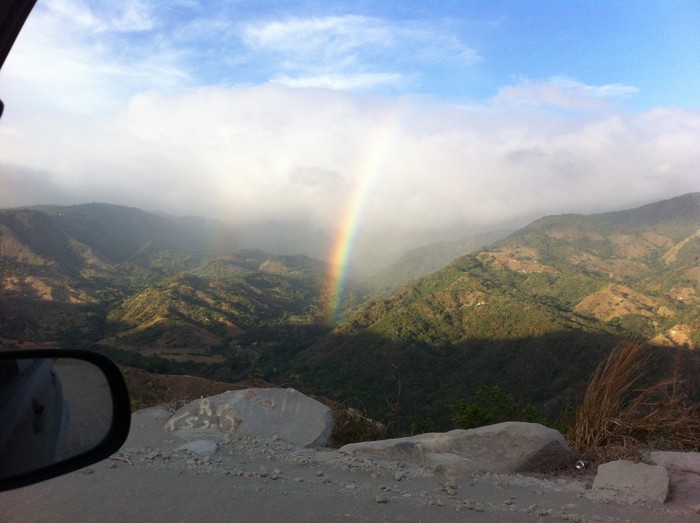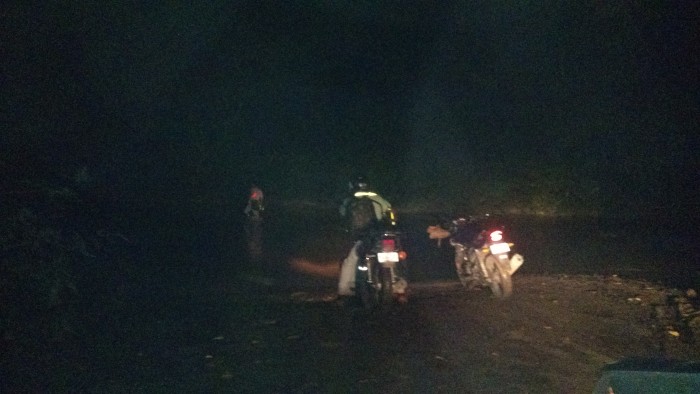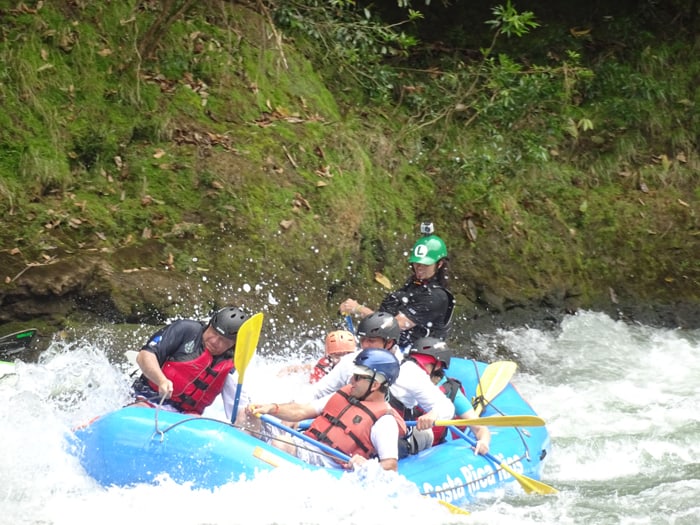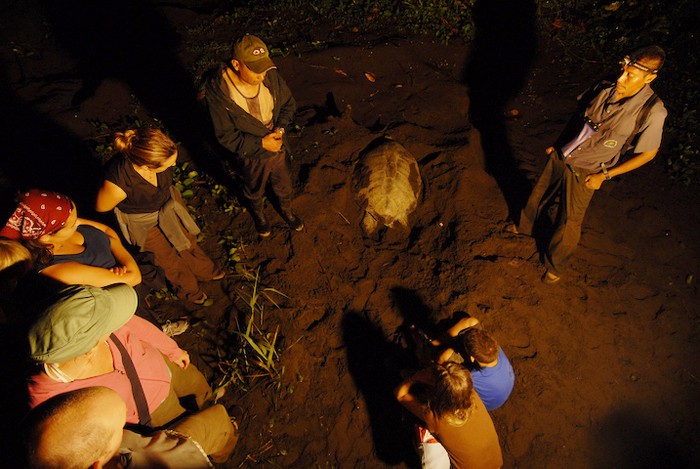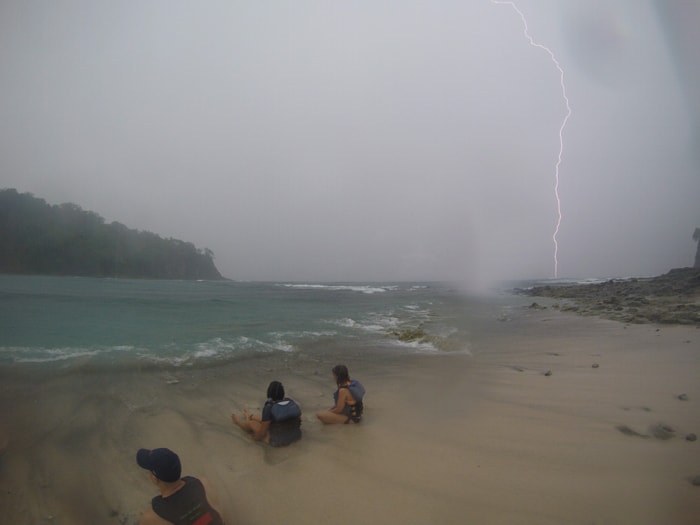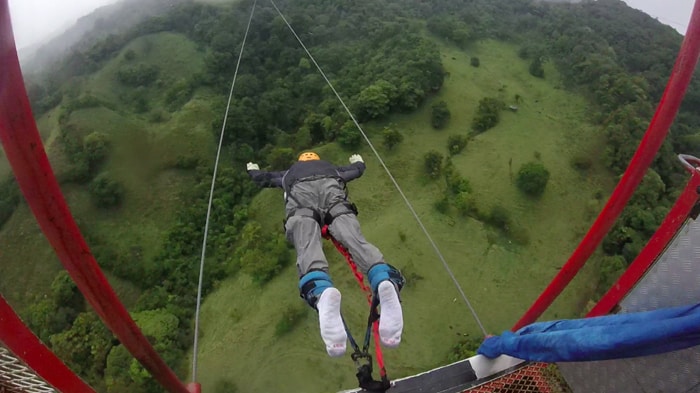“Life is a highway,” crooned Tom Cochrane, and “I want to ride it all night long.” Tico Times travel writers rode the highways of Costa Rica far and wide in 2015 (sometimes at night), and it’s not a stretch to say we had 10 years’ worth of adventure in one.
For a country smaller than the U.S. state of West Virginia, Costa Rica has so much to explore that it feels like it’s the size of Australia. And it’s not a country you just visit, but one you experience with all five senses on overload, often with your heart pounding and your adrenaline pumping.
From coast to coast and from beach to mountaintop, Costa Rica’s consistently amazing tropical beauty is unsurpassed — in fact, it created a writing problem for us when we found ourselves constantly overusing the words “stunning” and “spectacular.”
As inviting as it is to sway in a hammock on a beach with a cold drink, humans also find it strangely appealing to do something terrifying just for the fun of it, and there’s no better place to do that than right here in Tiquicia.
And so, with apologies to all the chocolate and coffee tours and animal rescue centers and hanging bridges and restaurant reviews and dazzling beaches and glorious waterfalls, here’s our list of our top 5 Costa Rica travel stories of 2015.
5. Scary river crossings in the dark
Whoever said “Getting there is half the fun” never had fun like this. An unfortunate series of events befell our intrepid reporter Michael Krumholtz as he tried to drive to Santa Teresa after crossing the Nicoya Gulf on the ferry from Puntarenas. With his fuel gauge dipping into the danger zone, he was forced to drive in the wrong direction to the nearest gas station.
Then his Waze app conned him into taking a “short cut” to Santa Teresa that promptly got him lost in the dark, faced with several scary river crossings. Trying to decide whether to go forward or turn around, he took off his shoes and socks and tried wading across to gauge the depth.
Then two guys showed up on motorcycles, making this 6’4” reporter with no cellphone service, miles from nowhere, wonder if this would end in a robbery or a helpful assist. Fortunately, the bikers were friendly, though in one of the year’s most disturbing crime stories at one of these same river crossings, four French women were overwhelmed by masked men, robbed of everything they had, sexually assaulted and left tied up in an abandoned house in the jungle.
Happily, Michael made it to Santa Teresa safely — just in time for a car alarm he didn’t even know he had to start screaming uncontrollably.
4. Rafting the Pacuare with the president
It started with an email inviting journalists to raft the Pacuare River, with a news conference en route about the need to save this world-class body of water from being dammed to generate electricity. No-brainer, I thought, and photographer Alberto Font agreed — we would pay good money to do this, and this was free, and there was a legitimate news story here.
Before the trip, I interviewed a number of river conservation advocates, including the owner of Costa Rica’s top rafting outfitter and a professor who was in negotiations with President Luis Guillermo Solís to sign a presidential decree that would prohibit the damming of the Pacuare and Savegre rivers for years to come.
The Pacuare’s Class IV rapids, and Alberto’s near-overboarding, gave me a great narrative lead, and the news conference added meat to the bones of my developing story, which I published a few days later under the headline “Dam the Pacuare? Over Turrialba’s dead body.” Two months later, I was shocked when this story won top journalism honors at the American-Costa Rican Chamber of Commerce Social Responsibility in Action Awards.
But the best part of this adventure happened four days after the story published, when I was invited to accompany President Solís, the first lady, their daughter and the environment minister on another rafting trip down the Pacuare, after which Solís signed a decree banning dams from the Pacuare and Savegre rivers for 25 years.
3. Watching a turtle lay eggs in Tortuguero
The first rule of turtle watching is “Wait, wait, wait.” The second is “Hurry, hurry, hurry!”
So I learned on my first visit to Tortuguero, with sons Jordan and Nathan, Nathan’s mom, Rhona, and brother Paul. Departing by boat, we were nearly rammed by a speeding boat in the dark, prompting our guide to say we should call the police.
Calling the police turned out to be a repeat theme on a night when a drunken tourist was detained for nearly climbing on top of a nesting turtle and then ignoring the cops’ warning to go away and not come back.
After a lot of sitting around — and then a lot of rushing in the dark — the evening came to a magical end when we watched a huge green turtle lay dozens of eggs in a hole on the beach and then bury them with her flippers.
(And speaking of turtle stories, let’s not forget the one that went viral, when a mob of tourists at Ostional prevented hundreds of olive ridleys from laying their eggs.)
2. Getting stranded by a storm while ocean kayaking
Not unlike the plot of “Gilligan’s Island,” it was a pretty day when we departed Sámara in kayaks for a visit to nearby Isla Chora, but “the weather started getting rough.”
First we watched two guys in kayaks without guides get shipwrecked on the island’s sharp rocks, and our guide rushed out to sea to save them. The rest of us, from the safety of the warm beach, were absorbed in other people’s problems when we suddenly developed a problem of our own.
It started pouring — not the usual afternoon shower, but a huge storm with lightning and thunder that turned the daytime dark, except for the blinding streaks of lightning, and pelted us with cold, hard rain.
To make matters worse, there was no shelter anywhere on this small island except in a tiny cave, which four of us squeezed into, sitting cheek to cheek. And then big, rocky chunks of the cliff above us started falling at our feet, as the island experienced a meltdown like a cake left out in the rain.
We dashed out of the cave before it entombed us, and then we found ourselves shivering in hard, cold rain, wearing life vests to stay warm. The ocean, however, was bathwater-warm, and despite the risk of electrocution many of us opted to bob in the water rather than freeze on the beach.
I asked our guide how many times this had happened before, and he said, “Never.”
1. Bungee jumping in Monteveeeeeeeeeeeeeeee…
I prefer my adventure extreme, please and thank you, but when I lurched into motion in a steel-mesh cable car to a spot 469 feet above the ground to go bungee-jumping at Extremo Park in Monteverde, I was as terrified as I’ve ever been.
I’m going to hate this, I thought. I’m going to hate it and I’m going to tell everybody else that they’ll hate it too.
But when the jumpmasters said “Five, four, three, two, one!” … I jumped. And a strange thing happened: As captured by the camera on my helmet, the terrified expression on my face turned into a smile as I plunged toward the valley floor, arms out like a bird, twisting in the wind but totally delighted.
On the video, as I was being cranked back up to the platform, you can hear me saying, “I’m not sure I can recommend this. This is a little too terrifying to enjoy.”
And yet, our scariest moments in life can become our most treasured memories. I paid good money for the two videos of my jump, one from my helmet and one from above, and I keep them in a prominent place on my laptop where I can easily find them and show them to anyone I meet.
Sometimes I meet beggars who ask me for 100 colones or less, and I almost always give them something. But I’m tempted to say, “Sure! And would you like to see my bungee-jumping video??”

